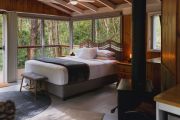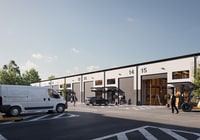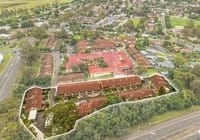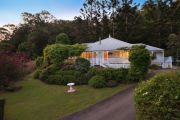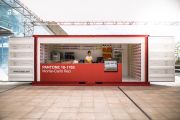
Canadians usurp Melbourne to take highest timber building record
At 10 levels, and with the Forte apartment building in Docklands, Melbourne held the world record for the highest commercial timber building for five years.
That is, until Canadian Russell Acton and his team from Acton Ostry Architecture threw up the challenge with an 18 level student housing project due for to be completion in Vancouver next month.
The Brock Commons Tallwood House was doable because of the load bearing capacities of the relatively new engineered timber products such as cross-laminated timbers (CLT’s), glalum (glued laminated) columns, and other manufactured building materials.
 Building with wood is quicker, and cleaner, than building with concrete or steel. Photo: Supplied
Building with wood is quicker, and cleaner, than building with concrete or steel. Photo: Supplied
Eighteen levels doesn’t seem that impressive in the skyscraper stakes and Acton, currently on an Australian lecture tour talking to building engineers, architects, developers and interested others about the future of tall timber buildings, said Brock Commons could feasibly have been higher but for the height limitations on the University of British Columbia’s campus.
“The technology” he tells, “is already very comfortable and adaptable to 30 storeys. After that there would have to be some new engineering adjustments”.
Acton started his five city talking tour which is being sponsored by Australia’s wood promotion peak body, Wood Solutions, in Brisbane on Monday. He will end it on Friday in Perth with a discourse entitled “A revolutionary return to multi-storey timber buildings”.
Building mid-rise timber structures is, he says, “a case of back to the future”. But more than the much-spruiked attributes of a sustainable material that sequesters rather than emits carbon, Acton is more enthused to talk about the fact that building with the new woods is so much quicker, cleaner and less wasteful than using concrete and steel.
 Brock Commons will provide student accomodation. Photo: Supplied
Brock Commons will provide student accomodation. Photo: Supplied
He says the tradespeople love it too. Unlike concrete structures that have crew coming on and off site as the concrete settles, often out of plumb, “these wood structures have a predictable 2 mm construction tolerance and the spin off benefit to the sub trades is that they can keep going on site because nothing is holding them back.
“At Brock Commons, the wood structuring took 66 days before it was ready for all the sub trades to come in and do their work. In fact, all the crews had to be doubled and the bigger crews worked faster”.
Those subbies, he claims, “got a taste of the future and they were almost crying about having to go back to working in messy, noisy concrete”.
Neighbours to the Commons construction also liked it because “the building was enclosed (clad in a high fire-rated timber fibre product) quite quickly, so it contained a lot of the sound of the building process.
“So it was faster, quieter and cleaner”.
Cleaner by vast degrees when compared to concrete and steel structures which, he rushes to assure, “there will always been a place for”.
The conventional construction of conventional concrete and steel buildings – in fact for the entire construction industry, produces some of the greatest amounts of waste and Acton has the hard data on the differences from the Commons project:
“For this mass, wood building, eight trucks would come and go from the site compared to 30 trucks used to deliver and to remove waste from concrete buildings. It’s such a no brainer. It’s a win, win, win”.
Historically, the bane of wood structures was their susceptibility to burning down. Yet Russell Acton says the four Vancouver fire chiefs who cast their eyes over Brock Commons rated it as possibly one of the safest buildings in the coastal city. The fire resistance of the cladding aside, “wood is a very predictable material in the way it responds to fire. I can’t tell you how many fire-fighters have now toured Brock Commons”.
 International House at Barangaroo is another wooden building under construction. Photo: Virtual Ideas
International House at Barangaroo is another wooden building under construction. Photo: Virtual Ideas
While Canada currently claims the height record, Acton is happy to endorse Australia “with your gorgeous hardwoods” as a potential world leader in the building of mid-rise wooden buildings. Indeed, Sydney’s Tzannes Architects is currently building the seven level International House at Barangaroo.
Wood won’t be the substance of neck-craning buildings but Acton is happy with that because he says their potential is to become very appealing “in the sweet spot” of development “which is mid-rise. There are going to be some beautiful projects being made of wood”.
